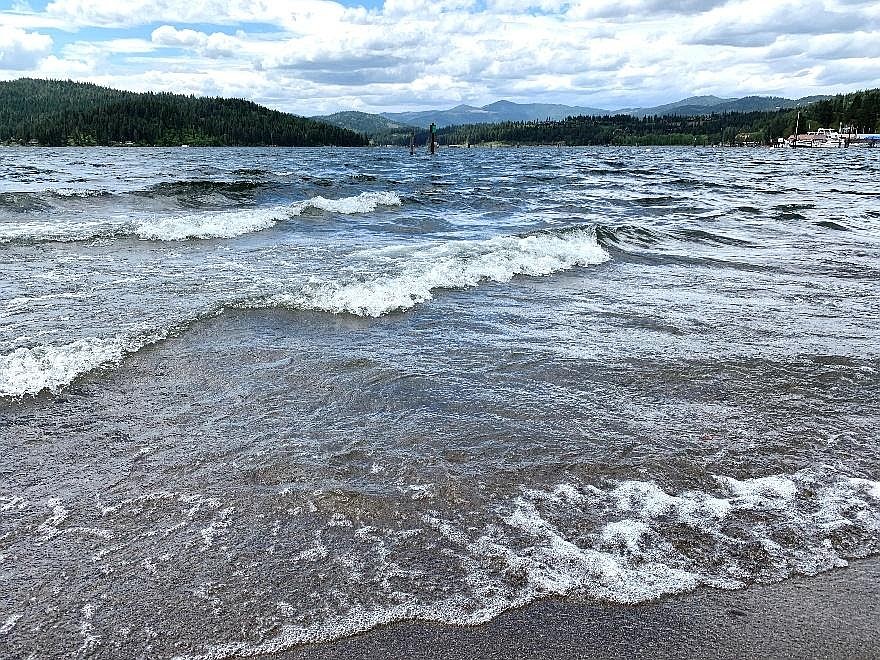Our Gem: From flammable to fishable: The U.S. Clean Water Act
The U.S. Clean Water Act of 1972 (CWA) resulted in profound water quality improvements. It is hard to believe how bad water pollution was in the prior decades. Cleveland’s Cuyahoga River, laden with petroleum, caught fire in 1969, as it had 13 times since 1868. Three other rivers caught fire that year. Fishing and swimming also were not safe in the Coeur d’Alene and Spokane rivers.
The CWA passed with an overwhelming bipartisan majority in the U.S. House and Senate. President Nixon vetoed the act, but Congress easily overrode it.
The CWA was unique in integrating pollution standards, solution funding, and enforcement to restore U.S. waterways. The act makes it clear that no one has the right to pollute our waters and that any discharge of pollutants requires a permit.
The CWA re-wrote the 1948 Federal Water Pollution Control Act, which had research funding but limited regulatory teeth. It is also connected to the 1899 Rivers and Harbors Act. Back then, waste and encroachments were causing hazards for ships trying to dock. The Rivers and Harbors Act required permission by the U.S. Army Engineering Battalion for encroachments and dumping.
The CWA’s precedents go even farther back. In 533 AD, Roman law was compiled and carved in stone at the Institutes of Justinian. The river, riverbed and banks, the air, and the sea was common to all. This foundation to English and European law ensured people could fish for food and sail past private property, in the public trust. Today the Army Corps of Engineers (ACOE) and the Environmental Protection Agency (EPA) administer the CWA under the public trust doctrine.
The heart of the Clean Water Act is the National Pollution Discharge Elimination System. EPA permits from this system provide standards to pollution-producing facilities and waterways that receive discharge. The CWA also authorizes the ACOE to regulate the disposal of dredged or fill materials to waters of the U.S.
The CWA jurisdiction is broadly described as navigable U.S. waters and the territorial seas. But protected waters were not precisely defined in the Act. The ACOE and EPA developed the legal definition, in a process that continues today via regulation, legislation, and the courts.
CWA permit denials have been challenged in court based on the Constitution’s 5th amendment “takings” clause, and the Commerce Clause. Between 1973 and 2008, EPA and ACOE enacted differing definitions of “waters of the U.S.” In 2008, the EPA and ACOE issued joint jurisdictional guidance based on limits imposed in three Supreme Court cases. In 2015, the agencies tried again to clarify jurisdiction, but this guidance continued to be challenged in various district courts.
The result is that the 2015 guidance is in effect in 22 states and the District of Columbia (including Washington). The other 28 states (including Idaho) are subject to the 2008 guidance. The debate is far from over, with bills introduced into the current Congress to reduce the scope of the CWA’s jurisdiction, and to maintain it according to 2015 rules. States and federally recognized Indian Tribes can promulgate water quality standards with EPA for CWA authority over waters they manage. Both the Coeur d’Alene Tribe and State of Idaho have CWA authority with regulatory and permit jurisdictions.
We have made great progress in cleaning up our waters. Many urban waterways are now suitable for fishing, canoeing, and even swimming. But we have a long way to go. 50% of U.S. waterways are impaired, and there are many emerging threats like nanoplastics and pharmaceutical pollutants. The CWA continues to play an important role in the ongoing effort to protect our waterways.
• • •
Written by Jim Ekins, Ph.D., Area Water Educator, University of Idaho Extension for the Our Gem Coeur d’Alene Lake Collaborative; a team of committed and passionate professionals working to preserve lake health and protect water quality by promoting community awareness of local water resources through education, outreach and stewardship. Our Gem includes local experts from the University of Idaho Community Water Resource Center, Coeur d’Alene Tribe Lake Management Department, Idaho Department of Environmental Quality, Kootenai Environmental Alliance, Coeur d’Alene Chamber of Commerce, Kootenai County, and CDA 2030. For relevant CWA citations please access this article at uidaho.edu/ourgem.

